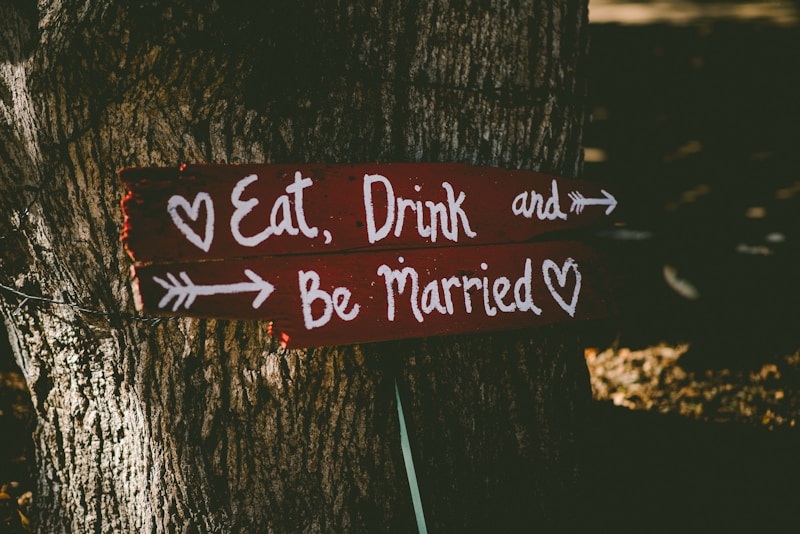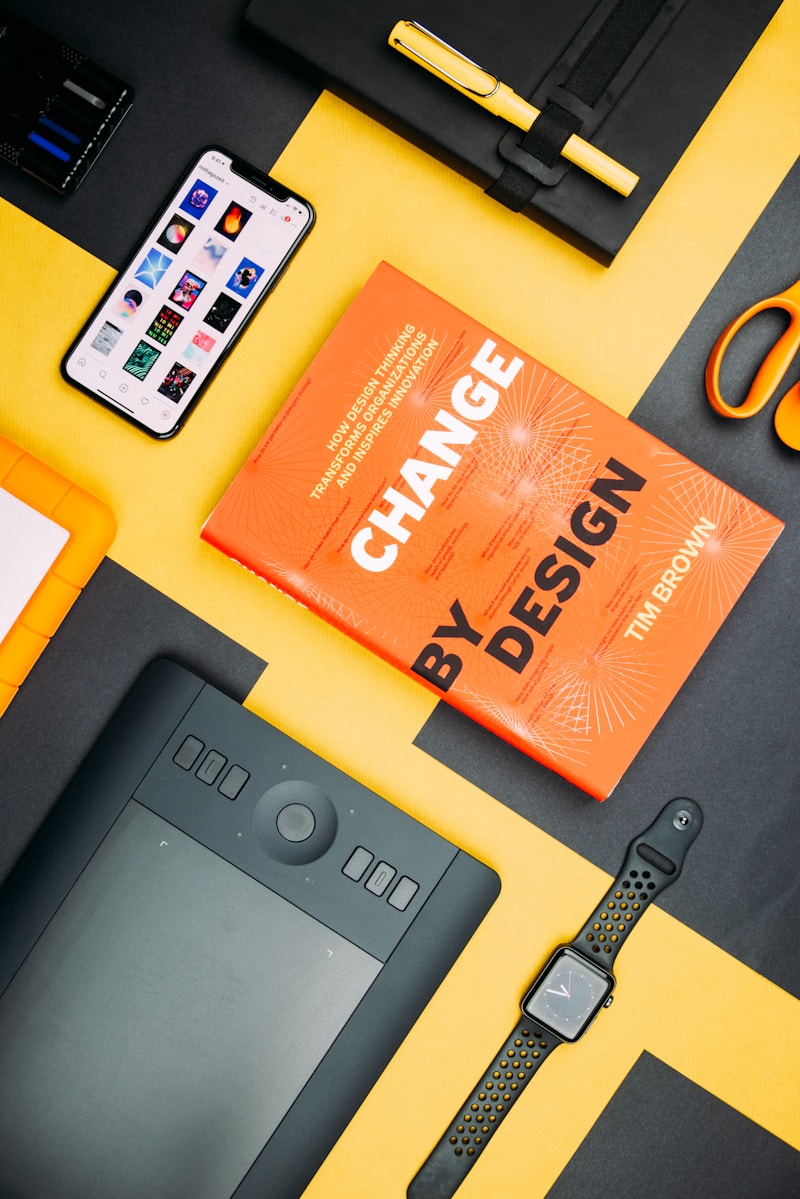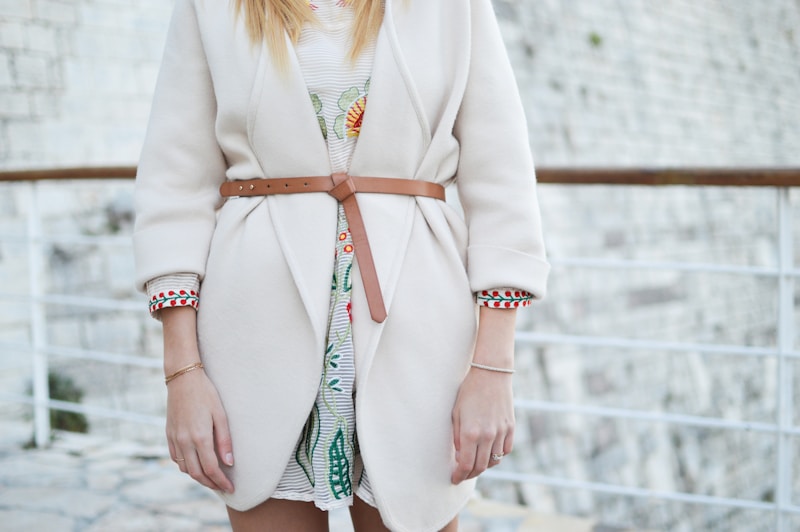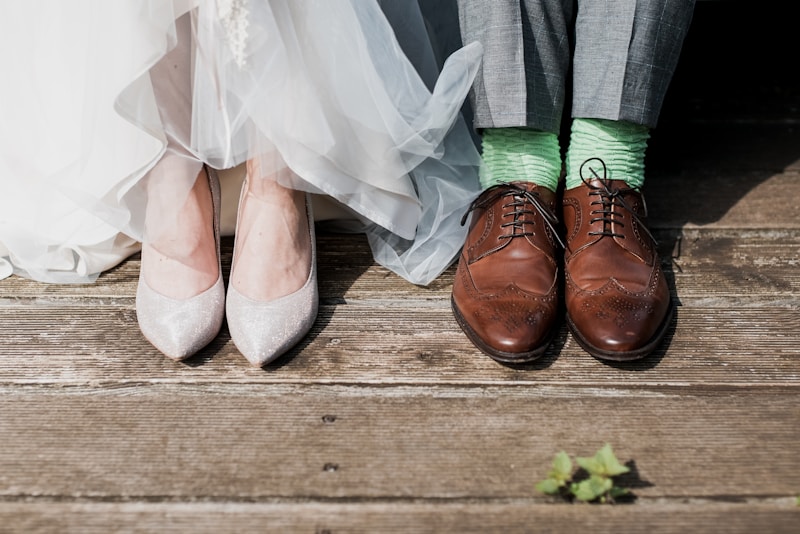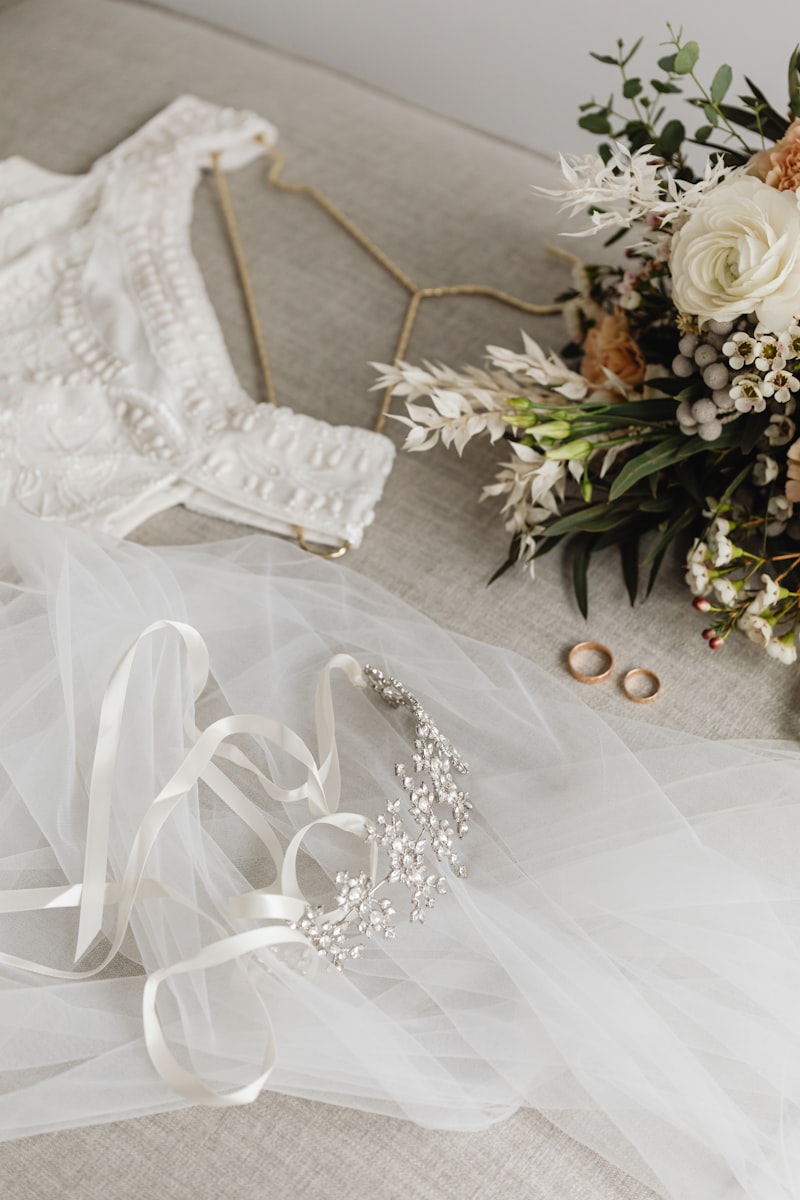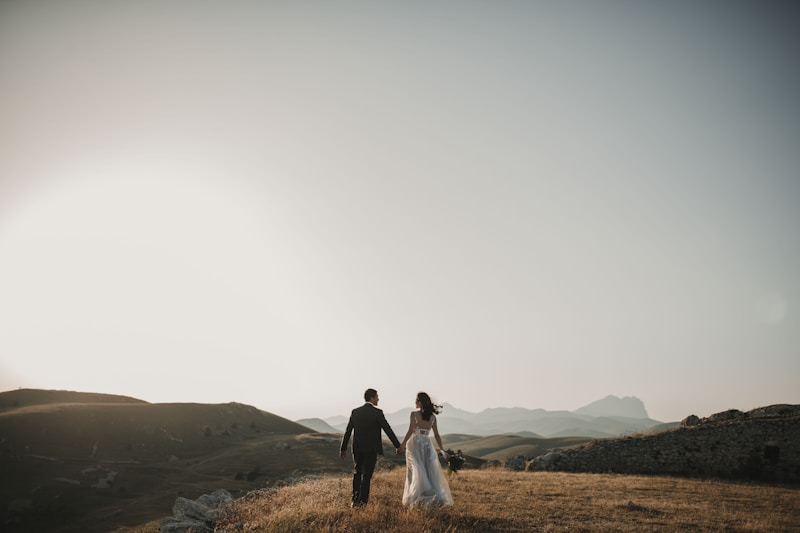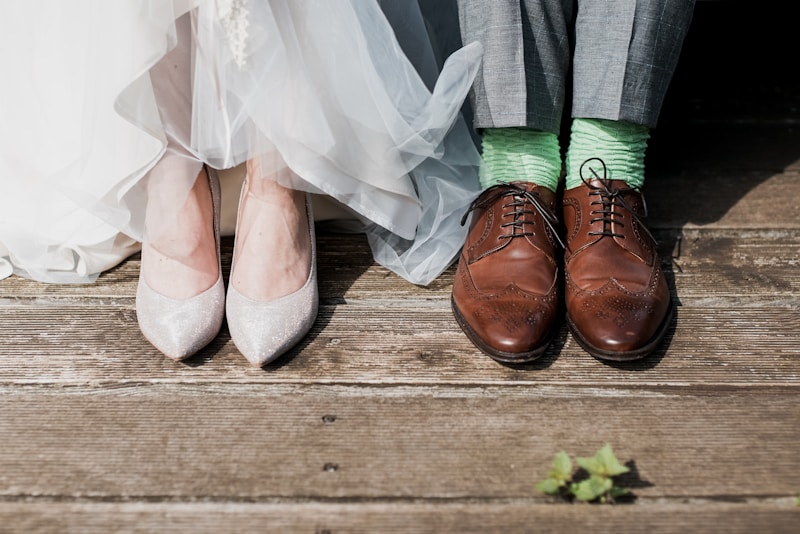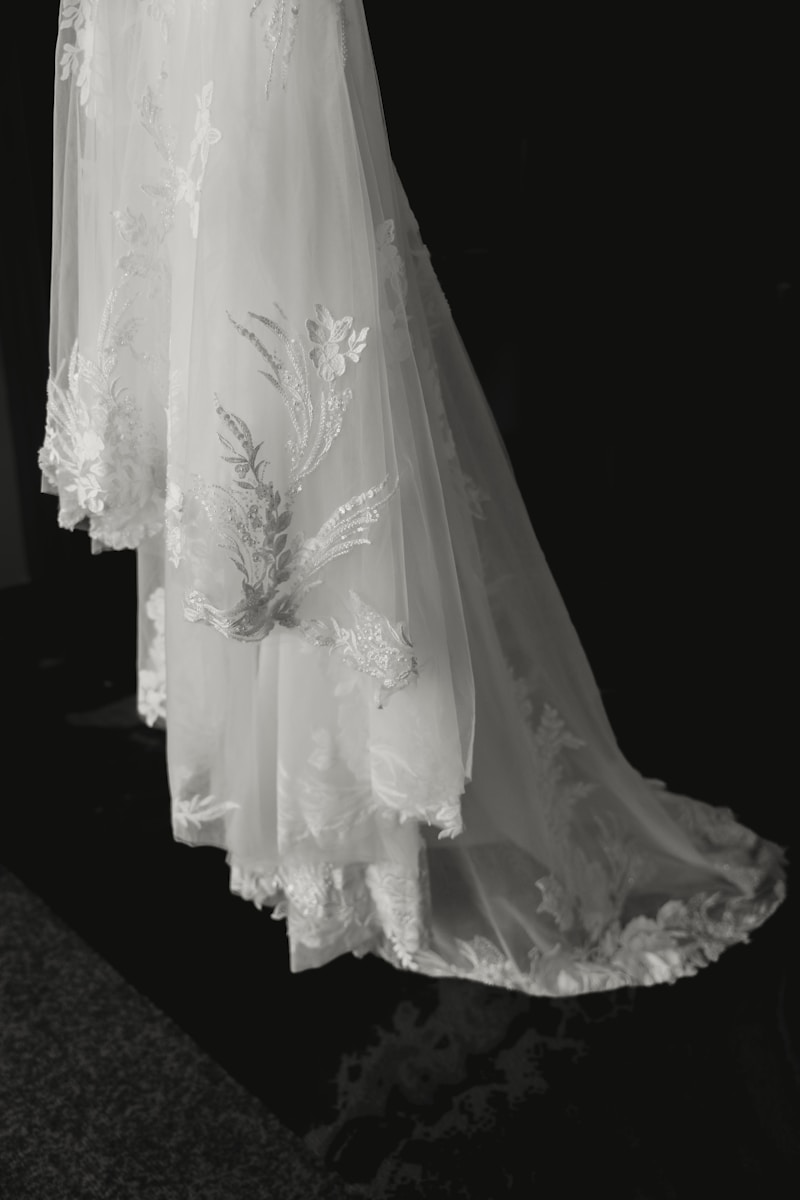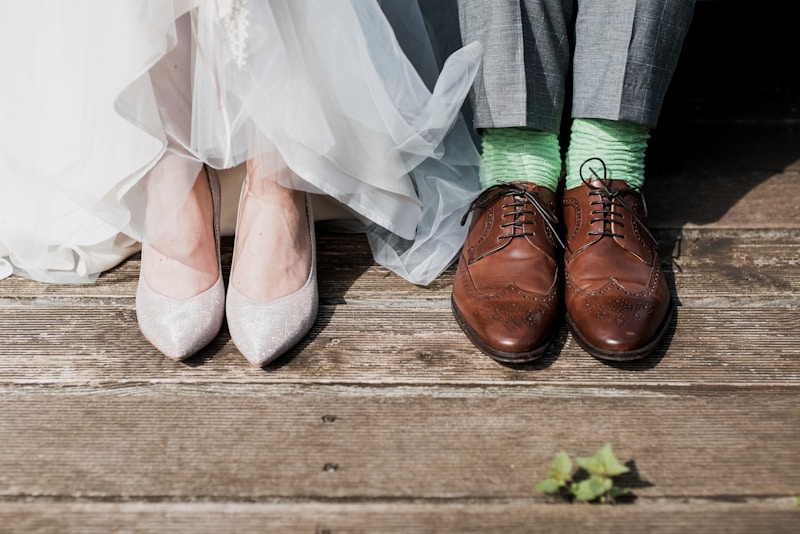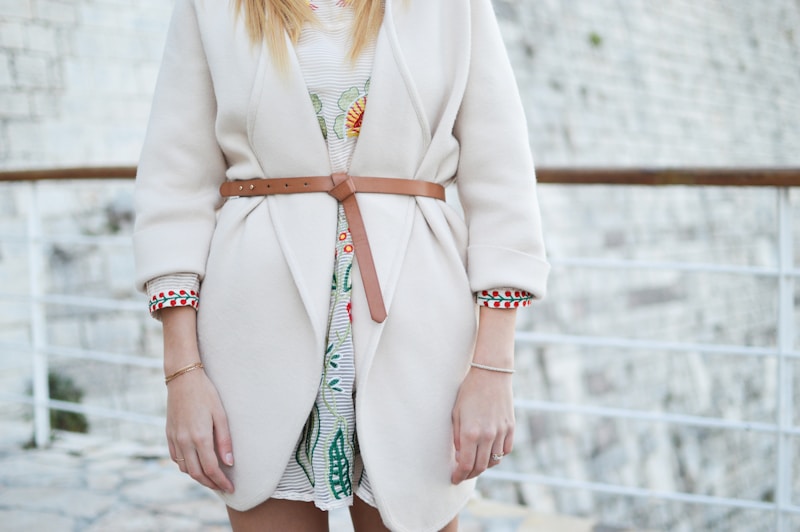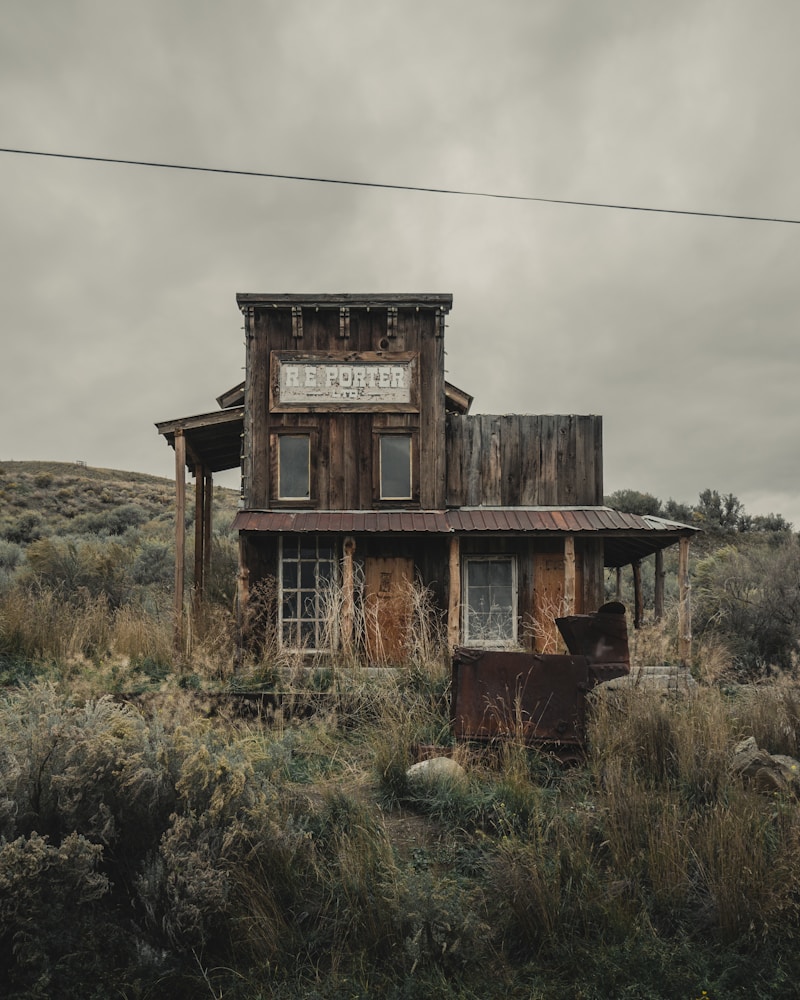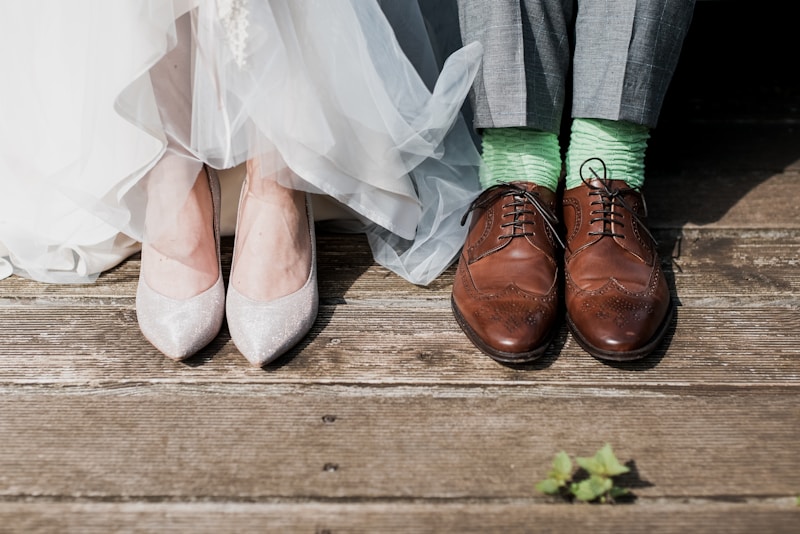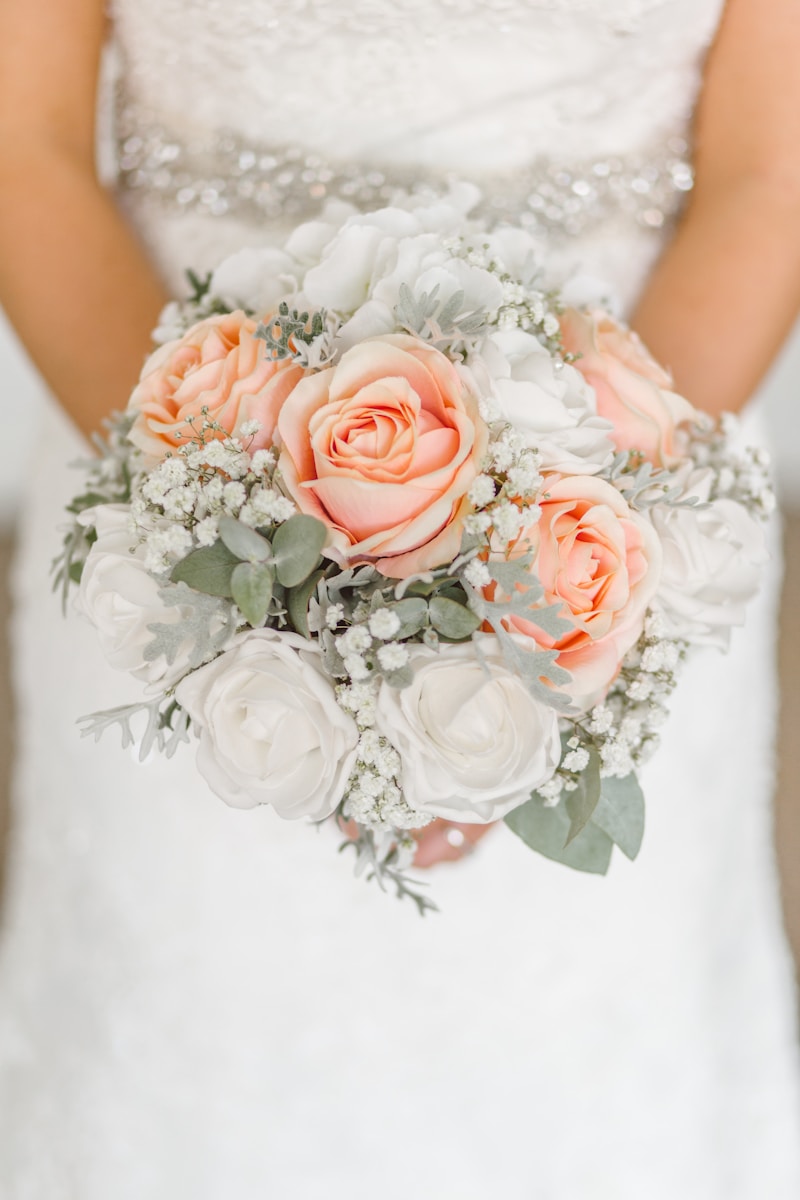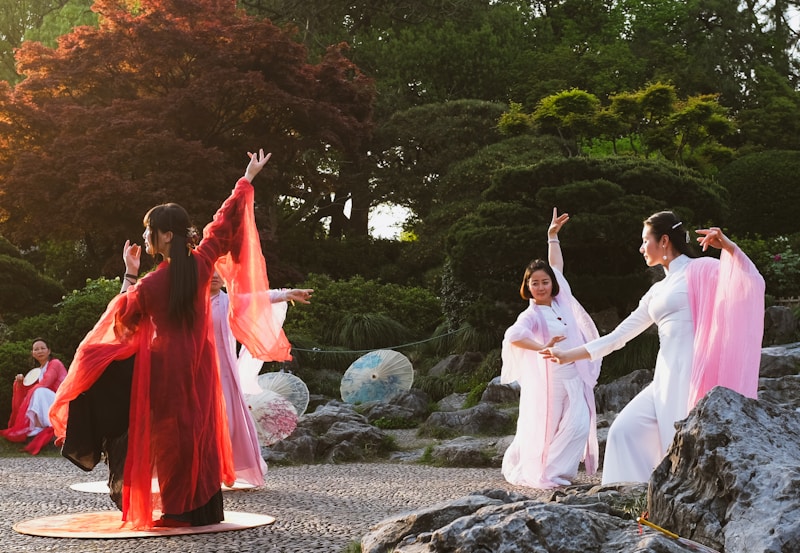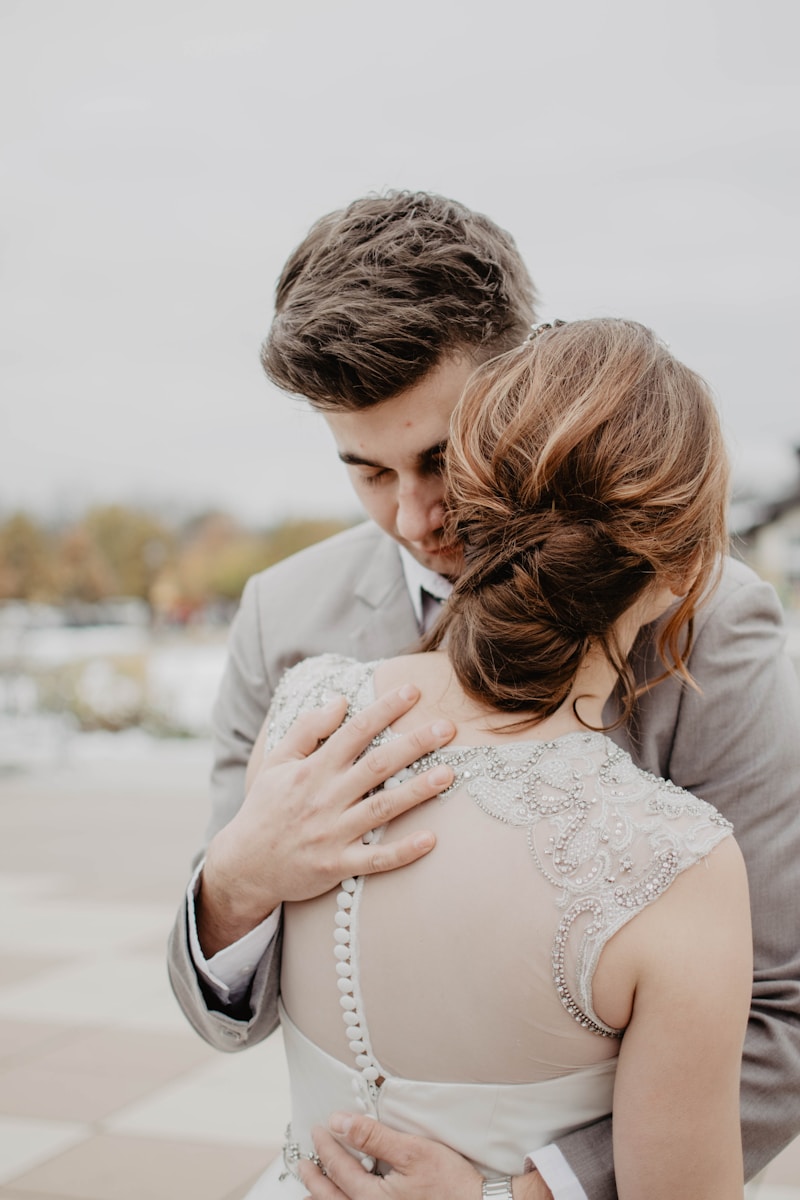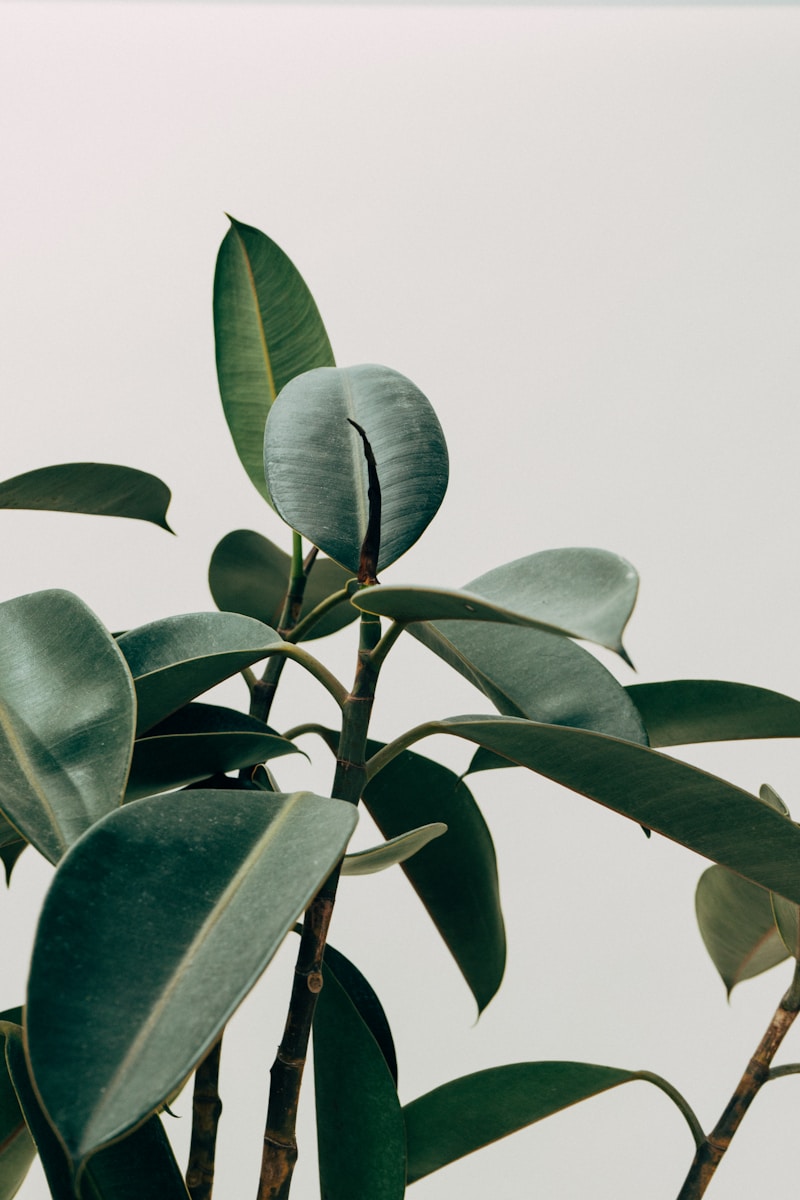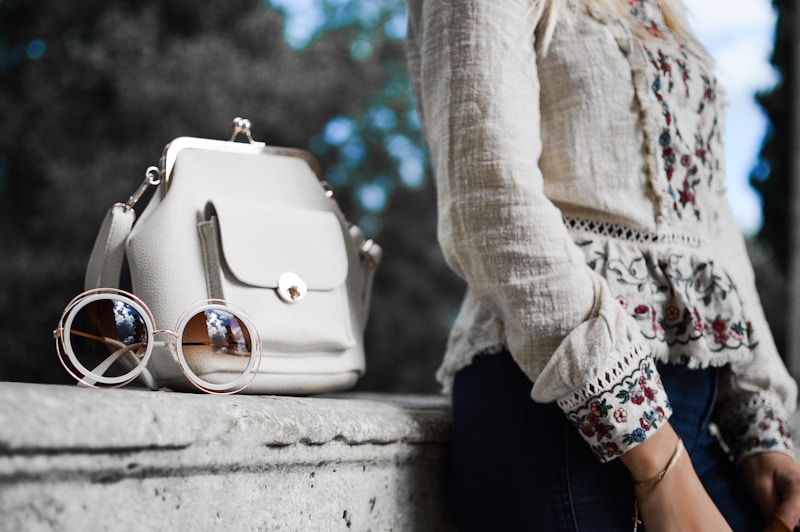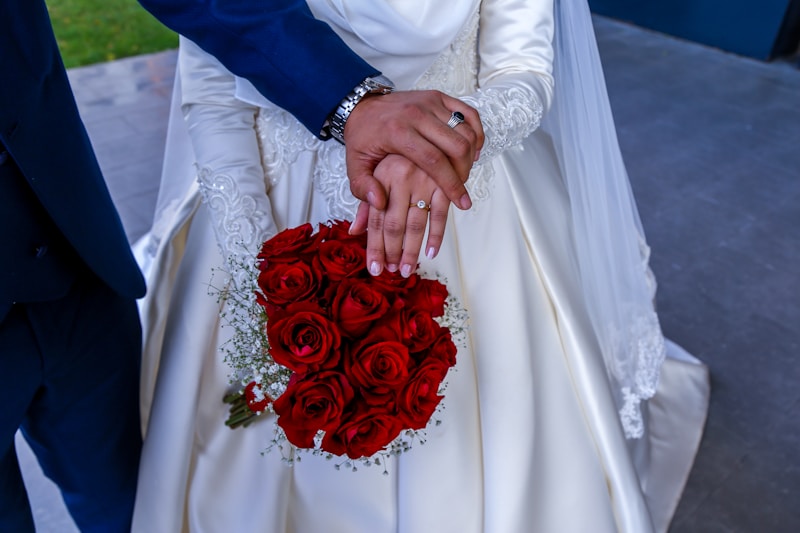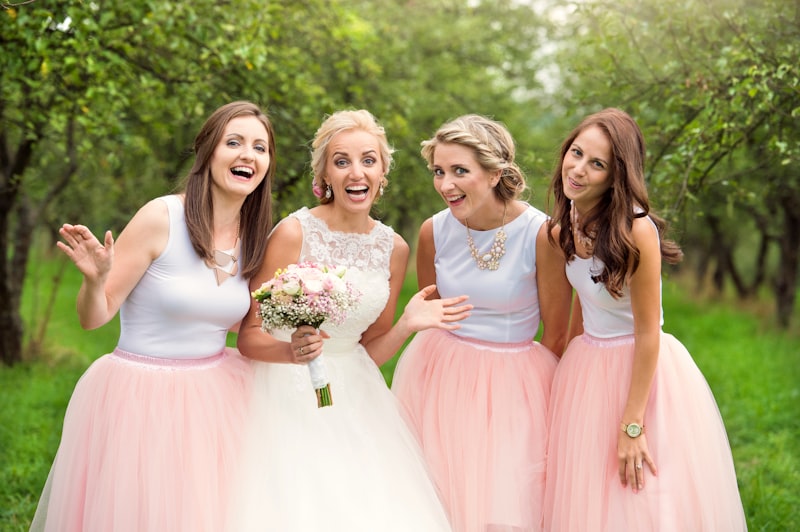How Hollywood Shapes Wedding Dress Trends: A Deep Dive into Fashion Influence
The world of weddings is a unique universe where romance and style converge, defined by diverse cultural traditions and personal tastes. However, one of the most significant influences on wedding fashion comes from Hollywood. This article explores how the vibrant world of cinema shapes wedding dress trends, focusing on high-profile celebrities as trendsetters, and how their choices resonate with brides all over the globe. Let's dive into the factors that contribute to these trends, and how brides can draw inspiration from their favorite stars.The Hollywood Effect on Wedding FashionHollywood has an unmatched ability to set trends that quickly permeate various aspects of fashion, including wedding attire. The red carpet, a space where celebrities showcase the latest designs, often features stunning gowns that inspire bridal collections. Designers are keen to create dresses that reflect current trends, ensuring that brides can channel their favorite celebrities on their special day.Celebrity Weddings that Captured AttentionHigh-profile weddings often serve as fashion benchmarks. When celebrities tie the knot, their wedding dresses become iconic pieces. A few notable examples include: Grace Kelly: Her stunning gown designed by Helen Rose in 1956 is still admired today, influencing countless bridal designs with its elegance. Kate Middleton: The duchess's lace-sleeved gown by Alexander McQueen surged requests for similar designs, rejuvenating vintage styles. Meghan Markle:...
Enduring Legacies in Bridal Gown Design: A Journey Through Time
Bridal gowns hold a special place in wedding traditions around the world, symbolizing elegance, love, and cultural heritage. As we explore the enduring legacies in bridal gown design, we uncover the influences that have shaped modern wedding attire. This article delves into historical inspirations, notable designers, and trends that continue to resonate today. From vintage lace to contemporary silhouettes, the evolution of bridal gowns reflects societal changes, artistic expressions, and the personal stories of those who wear them.Historical Influences on Bridal Gown DesignThe roots of bridal gown design can be traced back centuries, with varying global influences marking their evolution. In many cultures, the wedding dress has signified not only the union of two individuals but also the merging of families and traditions. Let's take a look at some historical milestones in bridal fashion:EraNotable FeaturesInfluences18th CenturyHeavy fabrics, elaborate embroideryRoyalty and nobility, opulent style19th CenturyWhite lace, full skirtsQueen Victoria's wedding to Prince AlbertEarly 20th CenturySimpler designs, tea-length gownsWorld War I impacts on fashion1970s - 1980sBohemian styles, unique fabricsThe flower power movement and cultural shifts21st CenturyInclusive designs, sustainabilityChanging societal norms and valuesThe Victorian Era: A Turning PointThe Victorian era brought significant changes to bridal fashion, largely influenced by Queen Victoria's choice to wear a white go...
From Vintage to Modern: The Evolution of Bridal Fashion
The journey of bridal fashion over the decades reflects not only the changes in design and fabric but also societal and cultural shifts. Understanding this evolution helps us appreciate how far we have come in terms of style, choice, and expression of individuality on the most special day of one’s life. In this article, we'll explore bridal fashion from vintage styles to contemporary trends, including key influences, iconic styles, and helpful tips for brides-to-be. We will also delve into how various eras have influenced modern bridal choices.The Roots of Bridal FashionBridal fashion began to take shape in the early 19th century. Before this period, brides typically wore their best dresses, regardless of color or style. However, Queen Victoria’s wedding to Prince Albert in 1840 marked a significant point in bridal fashion. She chose a white gown made of silk satin, a decision that would set off a trend that continues to this day.Key Vintage Bridal StylesBridal fashion has evolved through various eras, each leaving a unique impact. Let’s break down the distinct styles through the decades.EraKey FeaturesPopular Fabrics1840s - 1860sCrinolines, lace details, bell-shaped skirtsSatin, silk1920sFlapper dresses, dropped waist, shorter hemlinesChiffon, lace1950sA-line silhouettes, modest necklines, decorative detailsOrganza, tulle1970sBohemian influences, flowy gowns, long sleevesSilk, cotton1980sVoluminous skirts, exaggerated sleeves, dramatic veilsSatin, taffetaThe Impact of the 19...
Exploring Ancient Roman Wedding Attire: A Journey Through Time
Introduction to Ancient Roman Wedding AttireWedding ceremonies have been an integral part of human culture for centuries, with diverse customs and traditions reflecting the values and beliefs of different societies. One fascinating aspect of these traditions is the attire worn during weddings. In Ancient Rome, wedding attire was not merely a fashion statement; it was rich with symbolism and tradition, reflecting the importance of marriage in Roman society. In this article, we will delve deep into the intricacies of Ancient Roman wedding attire, exploring the garments worn, their meanings, and how they have influenced modern wedding fashions.Traditional Garments of the Bride and GroomIn ancient Rome, both brides and grooms adorned themselves in specific garments that symbolized their commitment and social status. The wedding attire was often luxurious and embellished, showcasing the wealth of the families involved in the union.The Bride's AttireThe bride's attire was central to Roman wedding ceremonies. Her garments typically included:Stola: The stola was a long, flowing dress worn by Roman women, symbolizing their status as married women. It was often made of fine fabrics and decorated with intricate designs. The stola was belted at the waist to emphasize the figure.Palla: The palla was a large shawl or cloak worn over the stola. It was an essential accessory, providing modesty and warmth. The palla could be draped over the shoulders in various styles, showcasing personal tas...
Exploring the Media Representation of Bridal Gowns: Trends, Symbolism, and Cultural Impact
Bridal gowns have long been a significant aspect of wedding culture, not only as a personal statement of style but also as a reflection of broader societal values. The media representation of bridal gowns encapsulates various themes, trends, and cultural shifts that influence how these garments are perceived. In this article, we will delve into the evolution of bridal gowns as portrayed in different media forms, exploring factors like design trends, cultural significance, and the impact of celebrity weddings.The Evolution of Bridal Gowns in MediaHistorically, bridal gowns were predominantly white, symbolizing purity and innocence. However, the media's portrayal has diversified significantly over the years. Today, we witness myriad styles, colors, and cultural influences. The following table summarizes key trends in bridal gown representations across various media:EraMedia InfluenceDesign TrendsCultural SignificanceVictorian EraPaintings & LiteratureElaborate lace, long trainsSymbol of social status1920sFilm & PhotographyFlapper styles, shorter hemlinesWomen’s liberation1980sTelevision & MagazinesPuffy sleeves, grandeurFantasy and opulence2010s-PresentSocial Media & InfluencersMinimalist styles, diverse backgroundsIndividual expression and inclusivityTrends in Media RepresentationIn recent years, the media representation of bridal gowns has increasingly embraced diversity. Platforms like Instagram and Pinterest have revolutionized how brides shop and showcase their gowns, lead...
Reimagining the Classic Wedding Dress: A Modern Take on Timeless Elegance
The wedding dress has long been a symbol of love, tradition, and celebration. For generations, brides have donned beautiful gowns to signify a momentous occasion, but what happens when we reimagine the classic wedding dress? In this article, we will explore innovative designs, modern trends, and how to personalize your wedding gown to reflect your unique personality while ensuring it fits seamlessly within the framework of modern marriages. We will also address common questions brides may have about this transformation, providing insights into making the perfect selection for your special day. The Evolution of Wedding Dress Styles Weddings are often steeped in tradition; however, the concept of the wedding dress has evolved significantly over the years. The classic silhouette featuring delicate lace, long trains, and voluminous skirts has given rise to innovative designs that draw from diverse cultural influences and contemporary styles. Below is a table showcasing the transformation of wedding dress styles through the decades: Decade Style Characteristics 1920s Flapper Dresses Fluttery hems, dropped waistlines, and beaded embellishments. 1950s A-Line Gowns Fitted bodices with full, flowing skirts that twirl beautifully. 1980s Princess-style Dresses Exaggerated sleeves, ruffles, and intricate details for a regal look. 2000s Mermaid Gowns Fitted at the bodice, flaring out below the knee for a dramatic effect. 2020s Minimalistic and ...
Timeless Elements in Wedding Dress Design: Crafting the Perfect Bridal Look
When it comes to wedding dress design, the quest for the perfect gown is filled with excitement and often a bit of anxiety. The choices are seemingly endless, but understanding the timeless elements in wedding dress design can simplify this journey. In this article, we will explore essential features that have endured through the ages, ensuring that your wedding dress not only stands the test of time but also reflects your personal style.Understanding Timeless ElementsWedding dresses have evolved over the years, yet certain elements remain eternal. From classic silhouettes to certain fabrics and embellishments, these key components contribute to the beauty and elegance of wedding gowns. Let's delve into these timeless elements that many brides gravitate towards.Classic SilhouettesThe silhouette of a wedding dress is one of the most critical aspects influencing its overall appearance. Here are some classic silhouettes that have remained popular amongst brides:SilhouetteDescriptionA-lineFlattering for various body types, it features a fitted bodice and flows down to the ground, resembling the capital letter 'A'.Ball GownThis fairy-tale style features a fitted bodice and a full skirt that adds drama, perfect for traditional weddings.MermaidFitted through the bodice, hips, and thighs, it flares out at the knee, showcasing the bride's curves.SheathDesigned to closely follow the body's natural shape, this silhouette creates a sleek and sophisticated look. Quality FabricsThe fabric ...
Exploring Historical Inspirations for Contemporary Bridal Gowns
Bridal fashion has always been influenced by historical trends, cultural shifts, and iconic figures throughout the ages. With the evolution of styles, contemporary bridal gowns are now more diverse than ever, combining traditional elements with modern flair. This article will delve into the rich tapestry of historical inspirations that shape today's bridal wear, revealing how past styles resonate with current design innovations. Whether you are a bride-to-be or simply an admirer of fashion history, understanding these influences will enrich your perspective on contemporary bridal gowns.Understanding the Historical Influences on Bridal GownsThe concept of a bride's gown has transformed dramatically over centuries. The roots of bridal wear can be traced back to various epochs, each contributing unique elements to what we see today. Some of the most influential periods include:PeriodKey FeaturesVictorian Era (1837-1901)Full skirts, lace details, high necklinesRoaring Twenties (1920s)Dropped waists, flapper styles, intricate beadworkHollywood Glamour (1940s-50s)Elegant silhouettes, dramatic trains, sweetheart necklinesModern Minimalism (2000s onwards)Simplicity, clean lines, and versatile designsEach era not only defines the styles but also reflects the social attitudes and lifestyle changes of the time.Victorian Era: The Foundation of Modern Bridal WearThe Victorian Era heralded a significant shift in bridal fashion, where white became the traditional color for weddings thanks t...
Exploring Rituals and Customs in Ancient Wedding Ceremonies: A Journey Through Time
Weddings are a time-honored tradition across cultures, and throughout history, they have been marked by unique rituals and customs that reflect the values and beliefs of different societies. Today, we will delve into the rich tapestry of rituals and customs in ancient wedding ceremonies, exploring various cultures and how they have shaped the modern wedding practices we see today. The Significance of Rituals in Weddings Rituals are often considered a binding thread in the fabric of human life, especially during significant life events like weddings. They give structure to the ceremony, imbue it with meaning, and connect participants to their cultural heritage. In ancient weddings, these rituals could involve religious, spiritual, or social elements, and varied greatly from one culture to another. Common Elements of Ancient Wedding Ceremonies Almost every culture celebrates marriage with some unique rituals. Interestingly, many of these customs have enduring themes such as the exchange of vows, blessings, and family involvement. Below is a breakdown of notable customs from various ancient cultures. CultureRitual or CustomAncient EgyptMarriage contracts and the presence of two witnesses.Ancient GreeceGroom's procession and the symbolic act of "stealing" the bride.Ancient RomeThe "confarreatio," involving a sacred cake and offerings to the gods.ChinaBridal chair procession and heavy symbolism in the red color.IndiaSeven vows taken around a sacred fire (Saptapadi).Ancient Egypti...
Exploring Victorian Wedding Fashion: A Timeless Elegance
Victorian wedding fashion encapsulates a unique blend of elegance, romance, and historical significance that continues to inspire bridal style today. The Victorian era, which spanned from 1837 to 1901 during the reign of Queen Victoria, was a time of profound change and extravagance in terms of fashion. In this article, we will explore the key elements of Victorian wedding fashion and offer insights into how modern brides can incorporate this enchanting style into their weddings. We will also address common questions regarding Victorian wedding attire and its relevance to contemporary bridal trends.The Historical Context of Victorian Wedding FashionThe roots of Victorian wedding fashion can be traced back to Queen Victoria’s own wedding to Prince Albert in 1840. The choice of a white gown was revolutionary at the time, as brides typically wore colorful dresses that could be worn again. Queen Victoria’s iconic gown inspired countless brides to embrace white, symbolizing purity and innocence. Over the decades, wedding fashion evolved significantly, influenced by various social, economic, and technological changes.Key Elements of Victorian Wedding FashionVictorian wedding fashion is characterized by several distinctive features that set it apart from earlier and contemporary styles. Here are some key elements that define this timeless attire:ElementDescriptionSilhouetteFull skirts supported by crinolines or petticoats, creating a bell-shaped silhouette.FabricsLuxurious materials...
Cross-Cultural Bridal Attire Comparisons: A Global Perspective
Bridal attire has always been a powerful expression of culture, tradition, and individual personality. Across the globe, brides don garments that reflect their heritage, beliefs, and personal style. This article will explore various cross-cultural bridal attire, comparing the distinctive styles and significant meanings behind them. By the end, you will gain insights into how different cultures celebrate love through their unique bridal fashions.The Importance of Bridal Attire Across CulturesBridal attire is not merely a matter of fashion; it carries deep cultural significance. From elaborate ceremonies to understated simplicity, clothing choices can signify societal norms, familial expectations, and personal beliefs. Across many cultures, the wedding dress is a key part of the celebration, showcasing the bride's identity and heritage.Understanding Cultural SignificanceIn many societies, the choice of bridal attire is imbued with tradition. For example, in Western cultures, the white dress symbolizes purity and new beginnings. In contrast, many Eastern cultures prioritize vibrant colors that represent prosperity and happiness.CultureTypical AttireSymbolismWesternWhite DressPurity, New BeginningsIndianRed Saree or LehengaFertility, ProsperityChineseRed QipaoGood Luck, JoyAfricanColorful Traditional DressCelebration, HeritageBridal Attire Comparisons by RegionWestern Bridal AttireIn Western cultures, particularly in North America and Europe, the traditional bridal gown is often ...
Exploring Gender Roles in Historical Wedding Fashion: A Timeless Reflection
Wedding fashion has always been a profound reflection of societal norms, cultural practices, and evolving gender roles throughout history. In this article, we will explore how gender roles have influenced wedding attire over the years, focusing on various historical periods and the contrasting styles that emerged as a reflection of male and female societal expectations. Whether it's the opulent Victorian dresses or the minimalist modern gowns, understanding the evolution of these styles sheds light on the changing perceptions of gender in society.The Historical Context of Wedding FashionWedding ceremonies have existed for millennia, and with them, the accompanying fashion choices that symbolize the union of two individuals. In ancient times, practical considerations often dictated wedding attire, but as societies evolved, so did the significance and complexity of wedding fashion. Let’s take a closer look at how these changes mirror gender roles throughout history.Ancient Times: Practicality Over StyleIn early civilizations, wedding attire was primarily functional. Women often wore garments made from locally sourced materials, while men typically donned simple tunics or robes. The emphasis was not on fashion as we know it but rather on utility and the demonstration of one's social status.The Middle Ages: Symbolism and SeparationAs we transitioned into the Medieval period, wedding fashion began to reflect greater symbolism. Women started to wear embellished gowns that not only ...
The Narrative of Tradition Versus Modernity in Bridal Fashion
Understanding the Dichotomy of Bridal FashionBridal fashion has always been a fascinating subject, encapsulating cultural narratives, social transformations, and personal stories. The tension between tradition and modernity in bridal wear is a reflection of broader societal changes, influencing not just choices in attire but also the very essence of weddings. This article explores this narrative, how it manifests in different cultures, and what future trends might be in store.The Role of Tradition in Bridal FashionTradition plays a pivotal role in shaping bridal fashion around the world. Many cultures have specific customs that dictate what a bride should wear. For example, in Western cultures, the white wedding dress is a symbol of purity and has its roots in Queen Victoria's choice of attire for her marriage to Prince Albert in 1840. In contrast, in many Asian cultures, red is the predominant color for bridal dresses, symbolizing good fortune and joy. Table 1: Traditional Bridal Attire Around the WorldCultureTraditional Bridal AttireSymbolismWesternWhite Wedding DressPurity, New BeginningsIndianRed Saree or LehengaGood Fortune, ProsperityChineseQipao (Cheongsam)Happiness, ProsperityAfricanKanga or WrapperCultural Identity, PrideModern Influences on Bridal FashionAs society evolves, so does the concept of bridal wear. Modern bridal fashion often challenges the conventions that have been in place for centuries. Today, many brides choose to step outside the traditional norms, ...
The Impact of Globalization on Wedding Traditions: A Cultural Exchange
The Influence of Globalization on Wedding TraditionsWedding traditions have long been a reflection of cultural values, societal norms, and historical contexts. However, in recent decades, the landscape of these practices has transformed significantly due to the forces of globalization. The world is more interconnected than ever, leading to the blending and adaptation of wedding customs across different cultures. This article explores the profound impact of globalization on wedding traditions, highlighting its advantages, challenges, and emerging trends.Understanding GlobalizationGlobalization refers to the increasing interdependence among countries through trade, communication, and cultural exchange. This phenomenon allows for the rapid dissemination of ideas, practices, and traditions. Whether it is through the internet, travel, or media, people are exposed to diverse ways of life, which inevitably influences their own customs, particularly when it comes to significant life events like weddings.1. The Blending of TraditionsOne of the most noticeable impacts of globalization on wedding traditions is the blending of different cultural practices. Couples today often draw inspiration from various sources, creating unique ceremonies that reflect their multicultural backgrounds.Cultural InfluenceTraditional ElementsModern AdaptationsWestern WeddingsWhite dresses, formal receptions, vowsDiverse locations, unique themes, personalized ceremoniesIndian WeddingsVibrant colors, rituals,...
Exploring the Elegance of Traditional Chinese Bridal Gowns: A Timeless Fashion Statement
Introduction to Traditional Chinese Bridal GownsFor centuries, traditional Chinese bridal gowns have been a symbol of beauty, elegance, and cultural heritage. These stunning garments are not just attire; they embody the rich history and deep-rooted traditions of Chinese weddings. With intricate designs and vibrant colors, traditional bridal gowns hold special significance for brides and their families. In this article, we will delve into the various styles, cultural meanings, and modern adaptations of traditional Chinese bridal gowns.The Historical Significance of Bridal GownsBridal gowns in China have a history that dates back thousands of years, with each dynasty contributing its unique touch to the garments. In ancient China, a bride’s attire was often dictated by her family's social status and the customs of her region. Generally, traditional Chinese bridal gowns are characterized by their bright colors, ornate embroidery, and luxurious fabrics. Red, representing happiness and good fortune, is the predominant color worn by brides due to its auspicious meanings.Types of Traditional Chinese Bridal Gowns1. Qipao (Cheongsam): This elegant, form-fitting dress has become popular in modern weddings. The qipao features a high collar and a straight silhouette, often adorned with intricate patterns and embroidery.2. Hanfu: A more traditional choice, the Hanfu consists of multiple layers and is characterized by flowing sleeves and a loose-fitting silhouette. This attire reflects the...
Exploring Unconventional Bridal Aesthetics: A Guide to the Modern Bride
Unconventional Bridal Aesthetics: A Trend Revolutionizing WeddingsThe landscape of weddings is changing. Traditional wedding themes are being replaced by innovative and creative approaches, giving rise to unconventional bridal aesthetics. Today, brides are seeking unique ways to express their individuality and love story through their wedding attire, decor, and overall celebration. In this article, we will explore what constitutes these unconventional bridal aesthetics, showcase examples, and offer tips for brides-to-be looking to break the mold.Understanding Unconventional Bridal AestheticsUnconventional bridal aesthetics encapsulates a variety of styles, all aimed at providing a personalized touch to the wedding experience. From non-traditional dresses to eclectic decor, this trend welcomes creativity over convention. Some key components include: Breaking the traditional all-white dress rule Incorporating unique themes and elements Choosing alternative venues Utilizing non-traditional color palettesThe Shift in Wedding TraditionsAs society evolves, so do the norms around weddings. Brides are increasingly rejecting the conventional expectations set by past generations. This shift is heavily influenced by social media, where unique weddings are showcased, leading to the popularity of these non-traditional aesthetics. Couples are now opting for personalized experiences rather than adhering to cookie-cutter templates.Examples of Unconventional Bridal AestheticsThe r...
Unveiling Minimalist Elegance in Bridal Gowns: A Timeless Trend for Modern Brides
In the world of wedding fashion, one trend has steadily gained momentum, captivating the hearts of brides-to-be around the globe: minimalist elegance in bridal gowns. This design philosophy, marked by simplicity, clean lines, and understated beauty, has revolutionized the traditional bridal landscape. In this article, we will delve deep into the intricacies of minimalist bridal gowns, exploring their characteristics, variations, and why they resonate so profoundly with modern brides. We will also address common questions about the practicality, styling, and emotional significance of these elegant creations.What is Minimalist Elegance?Minimalist elegance centers on the idea that less is more. In the context of bridal gowns, it embodies the following principles: Simplicity: Designs are stripped of excessive embellishments and flourishes. Timelessness: The aesthetics are meant to withstand the test of time rather than adhere to fleeting fashion trends. Quality Materials: Focus is placed on superior fabrics and craftsmanship, allowing the gown to speak for itself.Key Features of Minimalist Bridal GownsMinimalist bridal gowns are characterized by several defining features: Feature Description Clean Lines Structured silhouettes that emphasize the bride's natural shape without unnecessary distractions. Neutral Palette Soft whites, creams, and pastels create a serene backdrop, often used to evoke a sense of calm and purity. Subtle Textures Mat...
The Impact of Fashion Weeks on Bridal Trends
Fashion weeks across the globe have long been a vital force in shaping the trends and styles we see not just on the runway, but also in everyday fashion. However, a pivotal area that often remains underappreciated is the impact that fashion weeks have on bridal trends. With designers showcasing their latest collections during these glamorous events, it’s no surprise that brides-to-be take notice, ultimately shaping the way modern weddings are planned and executed. In this article, we will explore how fashion weeks influence bridal fashion, the latest trends emerging from these events, and what brides can expect in the upcoming seasons.Understanding Fashion Weeks and Their ImportanceFashion weeks are entrenched in the fashion industry, with events held in major cities like New York, Paris, Milan, and London. These occasions serve as platforms for designers to unveil their latest collections to a global audience, including buyers, media, and fashion enthusiasts. Significant fashion weeks often set the tone for upcoming seasons, establishing trends that will trickle down into mainstream fashion.The Bridal Industry's ResponseThe bridal fashion industry is not detached from this influence. Major bridal shows often coincide with the mainstream fashion weeks, showcasing beautiful, avant-garde ideas that brides may wish to emulate. Bridal designers are keen observers of these trends and frequently draw inspiration from the latest styles showcased on the runway. This can lead to chang...
Shift from Traditional to Contemporary Bridal Styles: A Complete Guide
Weddings are not just a celebration; they are a reflection of love, culture, and individual style. Over recent years, we have witnessed a significant shift from traditional bridal styles to more contemporary designs. This article will explore various aspects of this shift, including the different bridal styles available, current trends, and how to choose the perfect wedding attire.Understanding the ShiftThe transition from traditional to contemporary bridal styles can be attributed to multiple factors, including cultural changes, increased global influences, and the desire for personalization. Modern brides are more inclined to express their individuality on their big day, challenging age-old traditions.Key Differences Between Traditional and Contemporary StylesFeatureTraditional Bridal StylesContemporary Bridal StylesSilhouetteA-line, Ball GownSheath, Mermaid, JumpsuitFabricsSilk, SatinLace, Tulle, Sustainable FabricsColorIvory, WhiteChampagne, Blush, Bold ColorsAccessoriesVeils, TiaraFloral Crowns, Statement JewelryThemeClassic, Church WeddingsDestination Weddings, Boho-ChicCurrent Trends in Contemporary Bridal StylesAs we dive deeper into modern bridal trends, several styles have emerged as favorites among brides worldwide.1. MinimalismMinimalist bridal gowns are all about simplicity and elegance. Featuring clean lines and understated designs, this style resonates with brides looking for a classic yet modern look. The use of high-quality fabrics ensures that every detail s...
Breaking Traditional Bridal Color Norms: A New Era in Wedding Fashion
The world of weddings is evolving rapidly, and one of the most significant shifts observed in recent years is the breaking of traditional bridal color norms. Gone are the days when brides were expected to wear only white or ivory; contemporary brides are starting to embrace a spectrum of colors that reflect their unique personalities and cultural heritages. In this article, we explore the factors contributing to this change, the trending colors for modern brides, and what it means for the wedding industry as a whole.The Evolution of Bridal AttireTraditionally, the white wedding dress symbolizes purity and innocence, a concept famously popularized by Queen Victoria in the 19th century. However, this conventional norm has been challenged over the years as cultural diversity and personal expression have become central themes in modern weddings. More brides are looking to break away from tradition, opting for vibrant colors that tell their unique stories.Why Break the Norms?Breaking free from traditional bridal color norms can be attributed to several reasons: Personal Expression: Many brides wish to express their personality through their wedding attire, and color plays a significant role in that expression. Cultural Representation: In various cultures, different colors hold specific meanings, and brides may choose these colors to honor their heritage. Trends and Influences: Celebrity weddings and fashion influencers often set trends that encourage brides to explore bol...
